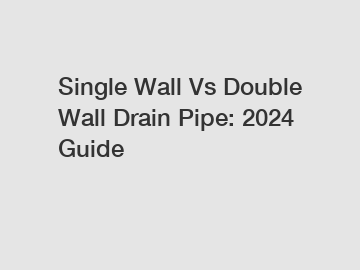What are the hoses for on boats?
May. 31, 2024
What are the hoses for on boats?
Hoses on boats serve various essential functions, primarily related to the movement and management of water and other fluids. Here are some common types of hoses found on boats and their purposes:
Bilge Pump Hoses: These hoses are used to remove water that collects in the bilge (the lowest part of the boat). Bilge pumps expel this water overboard to prevent flooding and maintain buoyancy.
Fuel Hoses: These are designed for the safe transport of fuel from the fuel tank to the engine. They are typically made of materials resistant to fuel and equipped with special fittings to prevent leaks.
Water Supply Hoses: Used for freshwater systems on board, these hoses supply water to sinks, showers, and other freshwater outlets. They are typically made of food-grade materials to ensure safe drinking water.
Marine Sanitation Hoses: These hoses are used in the boat's sanitation system, transporting waste from the toilet to the holding tank or overboard discharge. They are designed to be odor-resistant and durable.
Explore more:The effect of all kinds of packing element sealing ring
What Is Ductile Iron Pipe Used for?
HDPE Corrugated Pipes: Unveiling the Technical Specifications for Superior Performance
What is the cheapest plastic sheet?
Differentiating industrial hoses: Tips for buyers?
Are R9 Braids the Ultimate Protective Style?
Are OEM wire spiral hydraulic hoses better?
Engine Cooling Hoses: These carry water from the outside of the boat to the engine to cool it down. They are essential for preventing the engine from overheating.
Livewell and Baitwell Hoses: These hoses circulate water in livewells and baitwells to keep fish and bait alive. They bring fresh seawater into the well and expel the used water.
Washdown Hoses: These are used for cleaning the boat, decks, and equipment. They are typically connected to a water pump that draws seawater or freshwater.
Exhaust Hoses: These carry exhaust gases from the engine to the exhaust outlet, usually located at the stern of the boat. They need to be heat-resistant and durable to handle the high temperatures of exhaust gases.
Each type of hose is specially designed to handle the specific fluids and conditions it will encounter on a boat. Regular maintenance and inspection of these hoses are crucial for the safety and proper operation of the vessel.
Mastering the Art of Wire Spiral Hose
What are hydraulic hoses made of? Are traditional materials still the best choice?
How Chinese Hydraulic Fittings Improve Industrial Systems?
How to choose SAE 100 R1 hose?
Unraveling the Benefits of EN 856 4SH
How to Choose How Many AC Lines Are in a Car
4 Tips to Select a Textile Braid on Sale
180
0
0
Related Articles









Comments
All Comments (0)